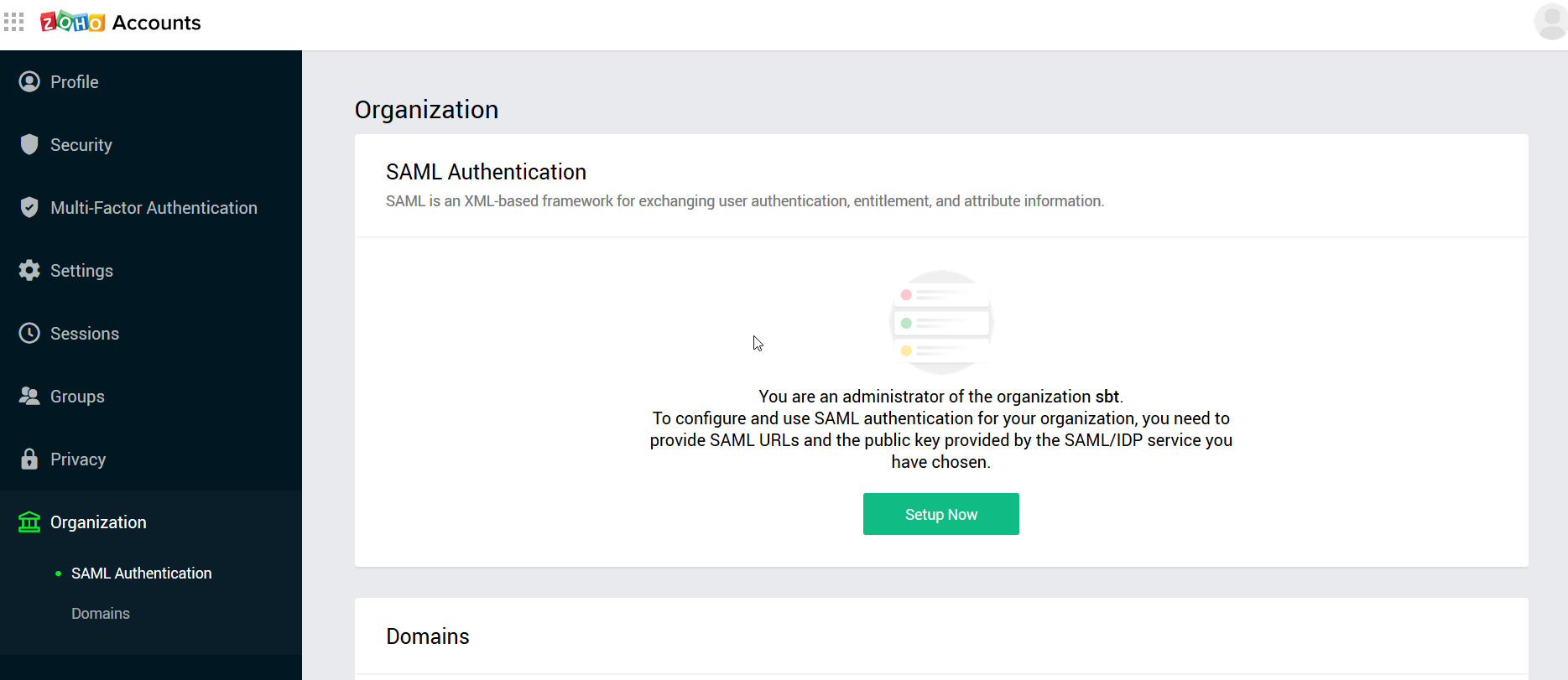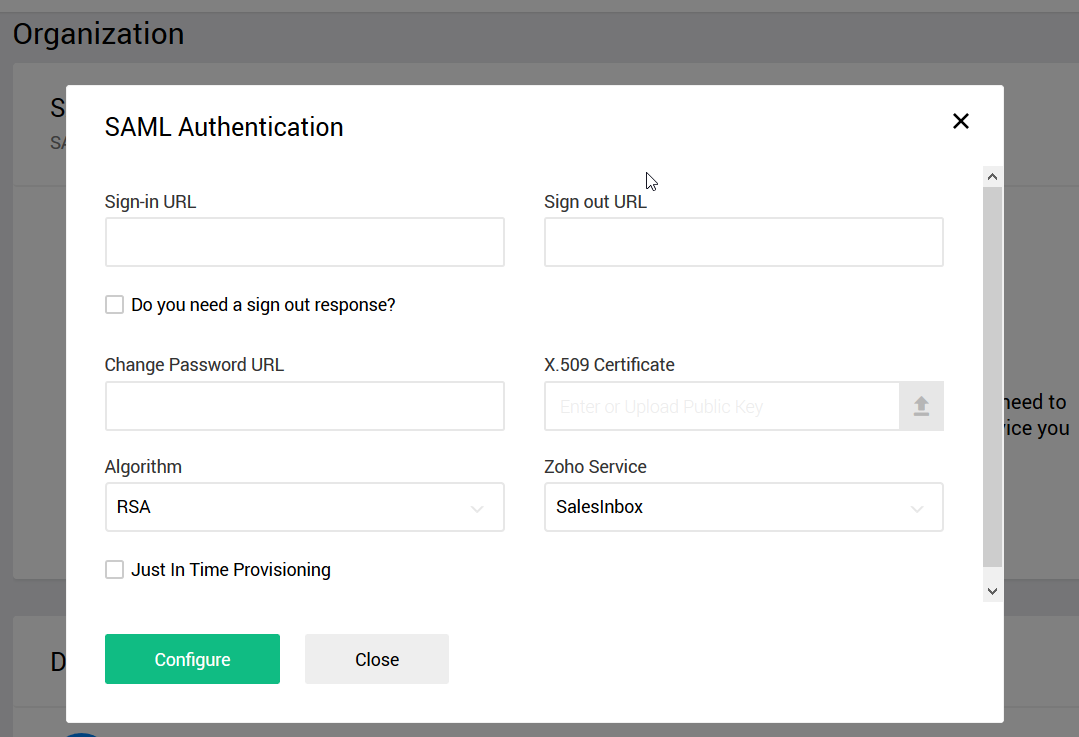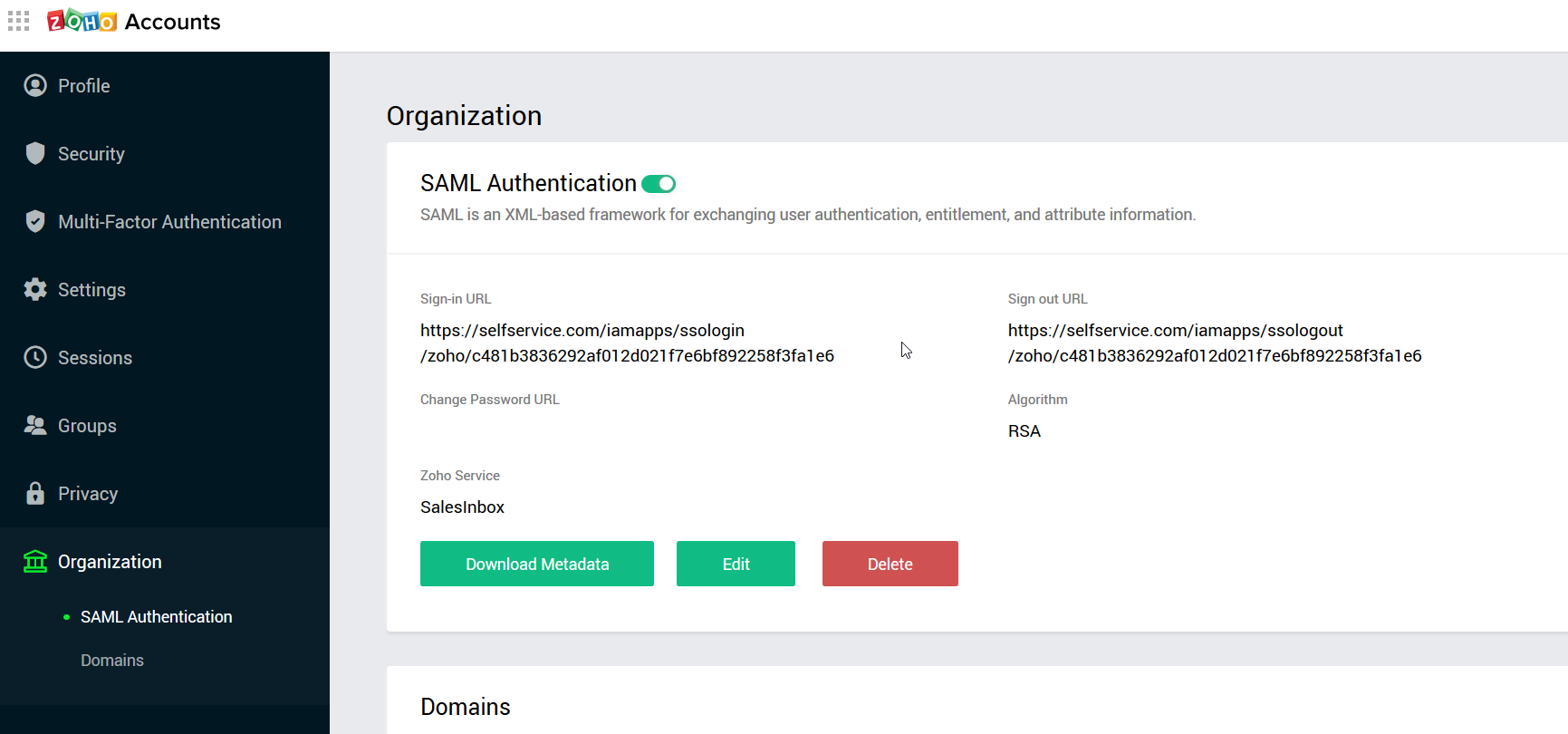Configuring SAML SSO for ZOHO
These steps will guide you through setting up the single sign-on functionality between ADSelfService Plus and ZOHO.
Prerequisite
-
Login to ADSelfService Plus as an administrator.
- Navigate to Configuration → Self-Service → Password Sync/Single Sign On → Add Application, and select Zoho from the applications displayed.
Note: You can also find Zoho application that you need from the search bar located in the left pane or the alphabet wise navigation option in the right pane.
-
Click IdP details in the top-right corner of the screen.
-
In the pop-up that appears, copy the Login URL, Logout URL and download the SSO certificate by clicking on the Download Certificate button.
Zoho (Service Provider) configuration steps
- Log in to Zoho accounts service (https://accounts.zoho.com ) with administrator credentials.
-
Navigate to Organization → SAML Authentication option from the left panel menu.

- Click Setup Now or click Edit if any other SAML Configuration available.
-
In the SAML Authentication popup's Sign-in URL field, Enter the Login URL copied in the Step 4 of Prerequisite
-
In the SAML Authentication popup's Sign Out URL field, Enter the Logout URL copied in the Step 4 of Prerequisite
-
In the SAML Authentication popup's Change Password URL field, Enter the ADSelfService Login URL (Ex: https://selfservice-domainportal).
-
In the SAML Authentication popup's X.509 Certificate field, Upload the certificate file downloaded in the Step 4 of Prerequisite.

- Click Configure.
-
Click on Download Metadata and open the metadata file in a text editor. Locate the AssertionConsumerService (ACS URL) parameter and copy it which will be used later.

ADSelfService Plus (Identity Provider) configuration steps
-
Now, switch to ADSelfService Plus’ Zoho configuration page.
-
Enter the Application Name and Description.
-
Enter the Domain Name of your Zoho account. For example, if you use johndoe@thinktodaytech.com to log in to Zoho, then thinktodaytech.com is the domain name.
-
In the Assign Policies field, select the policies for which SSO need to be enabled.
Note:ADSelfService Plus allows you to create OU and group-based policies for your AD domains. To create a policy, go to Configuration → Self-Service → Policy Configuration → Add New Policy.
-
Select Enable Single Sign-On.
-
Enter the SAML Redirect URL which is your Zoho Portal URL ( If you are not having separate portal, then fill up with https://accounts.zoho.com )
-
Enter the ACS URL you had saved in Step 9 of Zoho configuration.
-
Choose the Name ID format that has to be sent in the SAML response. The Name ID format will specify the type of value sent in the SAML response for user identity verification.
-
Click Add Application
Your users should now be able to sign in to Zoho Online through ADSelfService Plus.
Note:
For Zoho, Both SP-initiated and IDP-initiated flow is supported.


